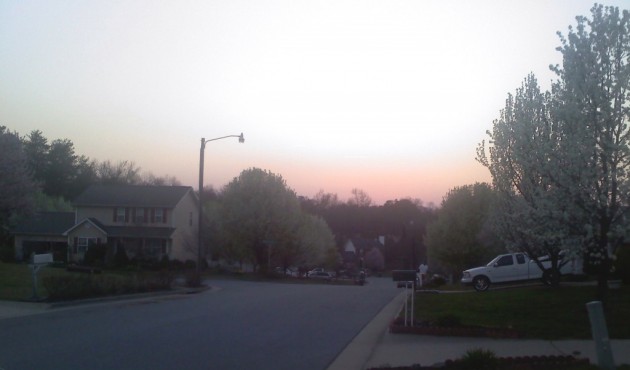 Streets like my own are becoming more desirable for black Americans and others looking for better deals down South.Photo: Kristen E. JeffersCross-posted from The Black Urbanist.
Streets like my own are becoming more desirable for black Americans and others looking for better deals down South.Photo: Kristen E. JeffersCross-posted from The Black Urbanist.
According to an article last Wednesday in The New York Times, a reverse Great Migration of African-Americans from the North to the South is occurring. Why is this happening? The Times piece cites the lack of jobs for young black graduates in the North; the relative ease of purchasing property in the South; for elders, the ability to retire in greater comfort; and a flip-flopped racial climate. Many of the elders feel the ancestral draw back to the South, as well.
The Washington Post, in another article about demographic trends, highlighted Section 8 voucher holders — some African-American — who are drawn to the South for its abundant suburban housing at affordable prices.
As a young black woman with some family members who have made the move back South and some who are considering a move back, I think The New York Times is spot on in its highlighting of retirees and their ancestral ties. I have aunts, uncles, and cousins who have bought houses and begun to prepare them for retirement. In the meantime, other family members have made homes in these houses, and they are good auxiliary gathering places for our family. Plus, my family members up North enjoy coming to visit the rural areas. They find the pace of life relaxing. I have a set of neighbors originally from New York and another set from Florida who have decided to retire here, for a better way of life. In other words, urban life is dead for them.
I’m not so sure that the claims of racial profiling and lack of jobs are a function of just New York, though. I think all black youth across the nation are struggling with this phenomenon. Racial profiling also seems to be a function of all police departments, although I don’t doubt that some forces handle this better than others. The fact remains that Atlanta and Charlotte have emerged as areas that honor and respect black culture, as well as providing a variety of nightlife options that appeal to young black professionals. And while more young professionals of a whole range of cultures besides African-American are converging on Washington D.C., there’s still a core of young black professionals who flock to that city in search of people with similar roots. Many young black college students and professionals have grown up with diverse cultures and welcome places that offer such experiences.
So what does this mean for urbanism? For the retirement age folks, it means that we need to work on encouraging tactics such as agrarian urbanism. This way, people can have some semblance of a small-town life without giving up the idea of retiring to a farm, and mobility if they can’t drive anymore or never learned to drive. For young people, it means to continue to advocate for places to go. Speaking for my friends and myself, we love having urban amenities like city parks, free concerts, and also lounge-style places to have a drink, maybe dance, and have great conversations with each other.
Planners, architects, engineers, and municipal officials should make sure that community organizations and neighborhood groups can express concerns and even participate in the design of retrofitted and new developments. I think these new migrants would welcome bike lanes, increased bus and train service, and community gathering spots that are community- and not corporate-owned. The key is to make sure these plans are presented in language that they understand. Many of these people are coming South to take more control of their lives. Let’s make sure we help them in that ownership and move them to something that will produce the greater wealth and well-being they desire.



